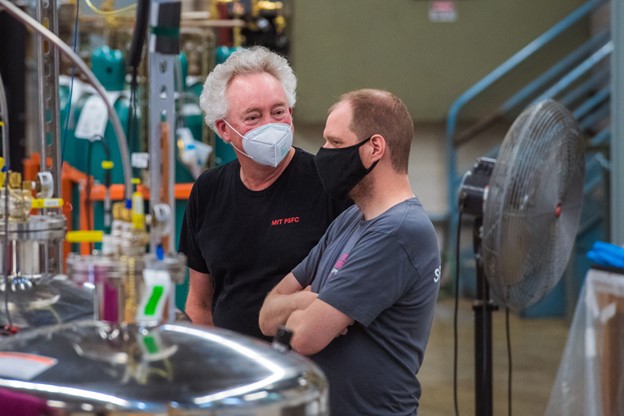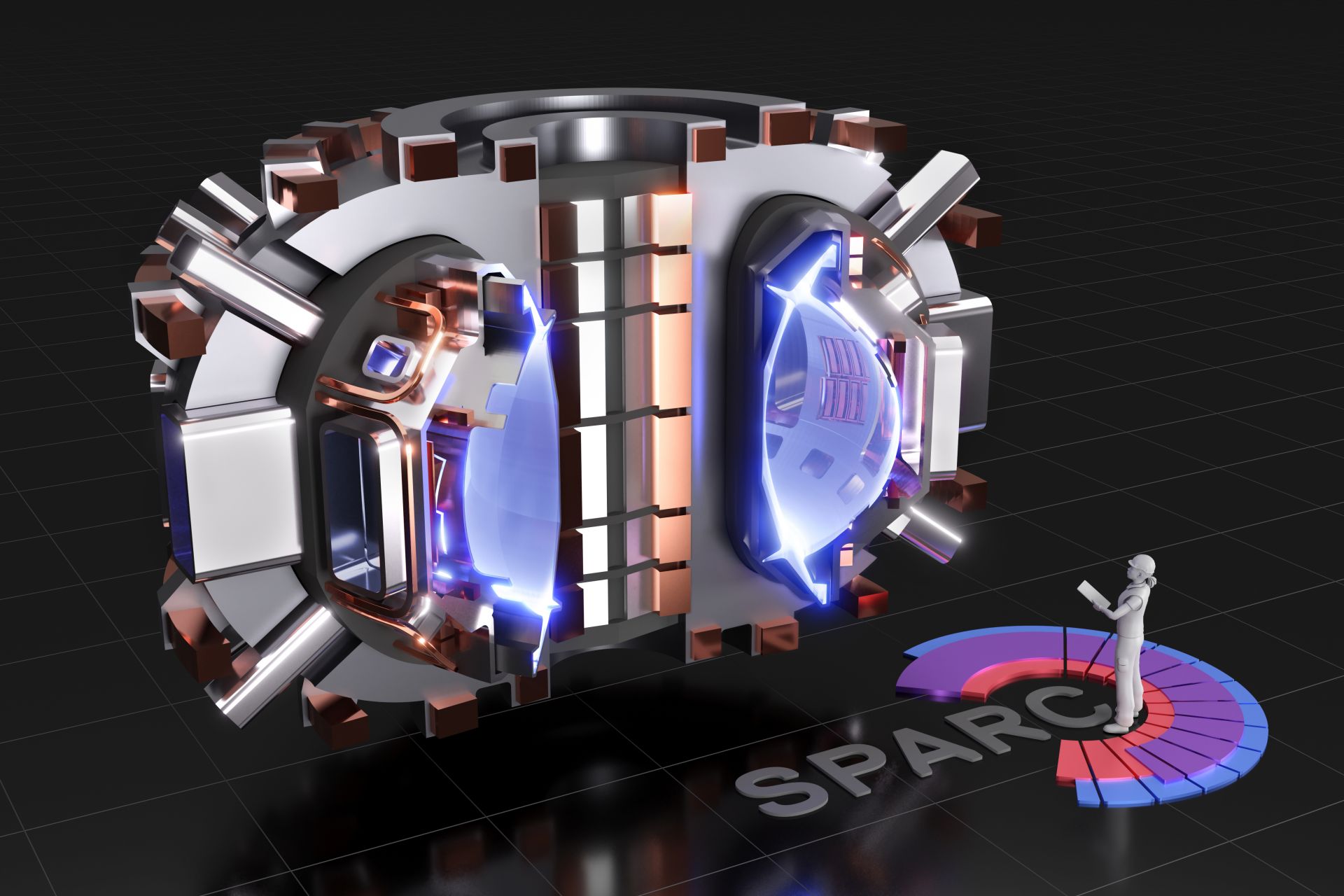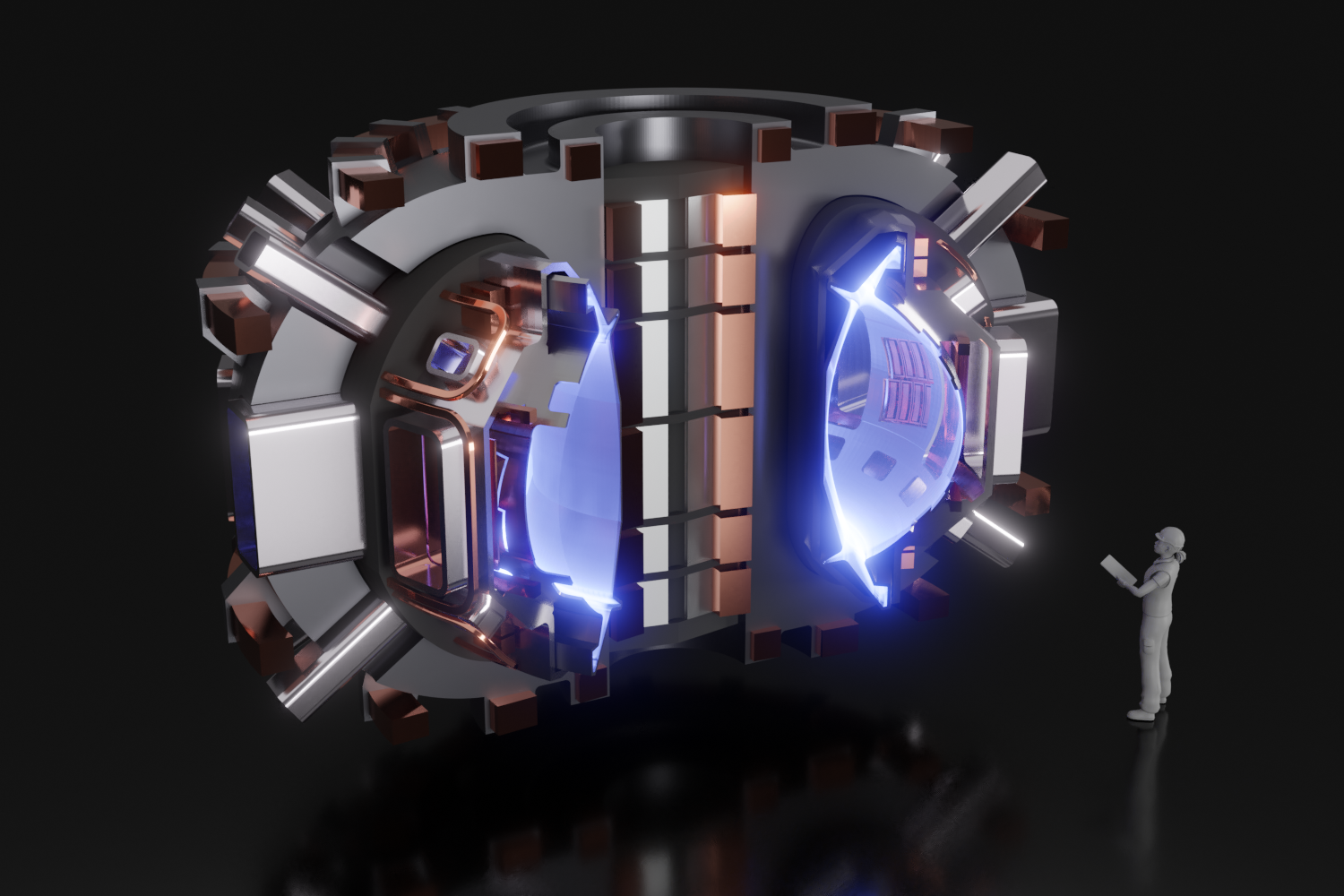A visualization of the SPARC tokamak experiment. (Image: Ken Filar/PSFC Research Affiliate)
In its June 30 announcement of a new deal to purchase 200 MW from Commonwealth Fusion Systems' (CFS) first ARC fusion power plant planned for Virginia, Google called it “the largest direct corporate offtake agreement for fusion energy” ever. While Google made no mention of its plans for the power, its press release noted that clean energy is needed to reduce data center emissions.
CFS CEO Bob Mumgaard showing Sen. Warren (left) and Secretary Granholm (center) around the SPARC facility. (Photo: CFS)
Commonwealth Fusion Systems (CFS) hosted visiting officials for a tour and ribbon-cutting ceremony to officially open its new headquarters in Devens, Mass., on February 10. Energy secretary Jennifer Granholm, Sen. Elizabeth Warren (D., Mass.), and Sen. Edward Markey (D., Mass.) were among the national, state, and local leaders invited to celebrate what CFS heralded as a “fusion energy campus.”
PSFC director Dennis Whyte (left) and CFS chief executive officer Bob Mumgaard in the test hall at MIT’s Plasma Science and Fusion Center. (Photo: Gretchen Ertl, CFS/MIT-PSFC)
The Massachusetts Institute of Technology’s Plasma Science and Fusion Center (PSFC) recently announced it will expand its involvement in fusion energy research and education under a new five-year agreement with Commonwealth Fusion Systems (CFS), a fusion energy company that got its start at MIT and is now building what it says will be the world’s first net-energy fusion machine—the demo-scale SPARC.
“CFS will build SPARC and develop a commercial fusion product, while MIT PSFC will focus on its core mission of cutting-edge research and education,” said PSFC director Dennis Whyte in describing the collaboration.








